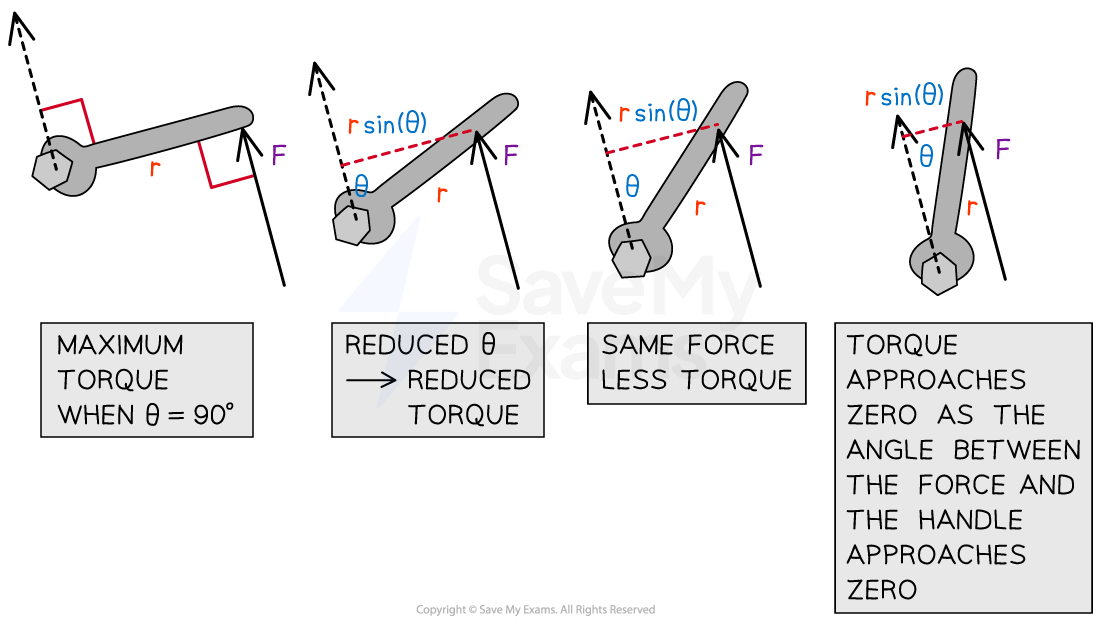Defining Torque (College Board AP® Physics 1: Algebra-Based): Study Guide
What is torque?
Torque is the rotational analog of force
In the same way that a net force causes linear acceleration, a net torque causes angular acceleration
A torque is produced when a force is applied at a distance from an axis of rotation and causes a change in rotational motion
The component of the force that causes the torque is perpendicular to the lever
The perpendicular distance from the axis of rotation to the line of action of the force is called the lever arm
This means that a force applied at the pivot, or axis of rotation, will not produce a torque
Torque exerted on a closing door

The magnitude of a torque depends on
the magnitude of the applied force
the distance from the axis of rotation to the point of application of the force
the angle between the position vector and the force vector

Torque equation
Torque can be defined as:
The product of the force and the perpendicular distance from the axis of rotation (lever arm)
The magnitude of the torque exerted on a rigid system by a force is:
Where:
= magnitude of the torque, in
= the component of the force that is perpendicular to the lever arm
= magnitude of the applied force, in
= lever arm, in
= angle between the applied force and the lever arm in
Torque of a perpendicular force

Torque of a non-perpendicular force

The maximum torque that can be exerted on a rigid system is when the force is perpendicular
to the lever arm
As a result, the same force is less effective when applied at non-perpendicular angles
Effect of angle on torque

Worked Example
The forces acting on a bicycle pedal at different positions during a ride are shown in the diagram below. The distance from the pedal to the axis of rotation is 24 cm.
In which of the following positions is the magnitude of the torque the greatest?

The correct answer is B
Answer:
Step 1: Analyze the scenario
The magnitude of torque on a rigid system is:
The maximum torque is exerted when
, where
is the angle between the line of action of the force and the lever arm
In each case, the lever arm is the same,
= 24 cm = 0.24 m
Step 2: Eliminate incorrect options
In position A:
= 400 N and
= 180°, so:
This means when the component of force is parallel to the lever arm, no torque is exerted on the pedal
Therefore, when the pedal is in this position, no amount of pushing down will produce any change in its rotational motion
Step 3: Deduce the correct answer
In position B:
= 90 N and
= 90°, so:
In position C:
= 75 N and
= 60°, so:
In position D:
= 150 N and
= 30°, so:
The largest torque occurs in position B
Examiner Tips and Tricks
You should know that torque is a vector quantity, however, in the AP Physics 1 exam, you will only need to consider whether it produces clockwise or anti-clockwise motion, and then use vector conventions to calculate the magnitude of torque accordingly. The direction of torque is beyond the scope of the course and will not be tested.

Unlock more, it's free!
Did this page help you?